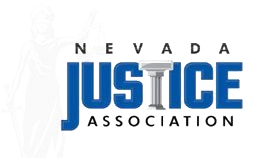- April 2 2024
- | Personal Injury

Why hire our personal injury lawyers?
At Leverty & Associates Law, we have experienced, skilful, and knowledgeable attorneys who are well-versed in personal injury law. We have successfully represented and supported many clients who got fair compensation for the damages they suffered. We can help you, too.
We tackle all of our clients’ issues according to their legal needs and work equally hard for all clients.
We will prioritize your case and ensure that those responsible for the damages you suffered compensate you. Contact us in Reno at (775) 322-6636 for a free consultation.
Personal injury lawsuits
A personal injury lawsuit is a legal action filed by an individual who has suffered physical, emotional, or psychological harm due to the negligence, recklessness, or intentional misconduct of another party. For example, if you are involved in an accident caused by another party, you can file for compensation for your damages.
The damages in this situation cover the following:
Physical injury
This refers to the injuries you suffered in the accident. The damages here would be the medical bills you are responsible for, including all costs related to the treatment, such as hospital bills, surgeries, medications, rehabilitation, and ongoing medical care.
Property damage
This refers to the damage to your car and anything inside it that was damaged. If your vehicle can be repaired, then the damages here will be the cost of repairs that will put your vehicle into the same condition it was in before the accident.
Lost wages reimbursement
If, as a result of the accident, you have to be absent from work, you also should be reimbursed for the work you missed. In general terms, lost wages refer to the income you would have earned had you not been injured. It includes salaries, bonuses, and other forms of compensation.
If you’re considering filing a personal injury lawsuit to recover damages, taking the following steps would be helpful:
- Consult with an attorney: A competent personal injury attorney will determine the outcome of your case. Our personal injury attorneys will make sure they guide and support you throughout the process.
- Investigate and gather evidence: You need evidence to prove your claim, so ensure you gather and preserve any proof related to the crash. If your injuries prevent you from doing this, our attorneys will thoroughly investigate to prove liability and gather evidence to support your claim.
- File a claim with the at-fault party’s insurance company.
- Engage in negotiations and settle.
- If it is impossible to reach a fair settlement, file a lawsuit.
Types of damages in personal injury lawsuits
The following are the different types of damages in a personal injury action:
Economic damages
These types of damages are tangible losses that have a monetary value. They can be calculated and quantified. They include property damage, medical expenses, lost wages, and other financial losses caused by the accident.
Non-economic damages
Non-economic damages are subjective and more challenging to quantify because they do not have a set dollar cost. These damages are to compensate you for intangible losses, and examples include the following:
- Pain and suffering: It refers to the physical discomfort, emotional anguish, and mental distress you experienced due to the injury.
- Loss of enjoyment of life: It refers to your inability to engage in activities or hobbies you used to enjoy before the injury.
- Loss of consortium: This refers to your inability to maintain a marital relationship due to the injury.
Since non-economic damages are intangible, insurers and lawyers use the multiplier method to determine an amount, choosing a number from one to five to multiply your economic damages.
Punitive damages
These types of damages are granted in cases where the offending or responsible party’s behavior was reckless, malicious, or intentional. Economic and non-economic damages compensate the injured party, while punitive damages punish the responsible party and discourage similar behavior in the future.
The Leverty & Associates Law team can help you get fair compensation
At Leverty & Associates Law, our attorneys commit and dedicate their knowledge and skills to clients who need legal support and advocacy. We have had many clients with personal injury cases and successfully helped them get their due compensation for the damages they suffered.
We work on a contingency fee basis, so you don’t have to worry about upfront fees. Contact us in Reno at (775) 322-6636 if you need a team of trusted attorneys. We offer free initial consultation.



 With his master’s in insurance law, Patrick routinely helps individuals and businesses who are having issues with their insurance company. He also has extensive experience with personal injury actions, complex tort actions, product liability matters, and class actions. Patrick Leverty is rated AV by Martindale Hubbell (the highest rating) and has been granted membership in the Million Dollar Advocate Forum, and Multi-Million Dollar Advocate Forum. Patrick Leverty has been certified as a Personal Injury Specialist by the State Bar of Nevada. [
With his master’s in insurance law, Patrick routinely helps individuals and businesses who are having issues with their insurance company. He also has extensive experience with personal injury actions, complex tort actions, product liability matters, and class actions. Patrick Leverty is rated AV by Martindale Hubbell (the highest rating) and has been granted membership in the Million Dollar Advocate Forum, and Multi-Million Dollar Advocate Forum. Patrick Leverty has been certified as a Personal Injury Specialist by the State Bar of Nevada. [ 



